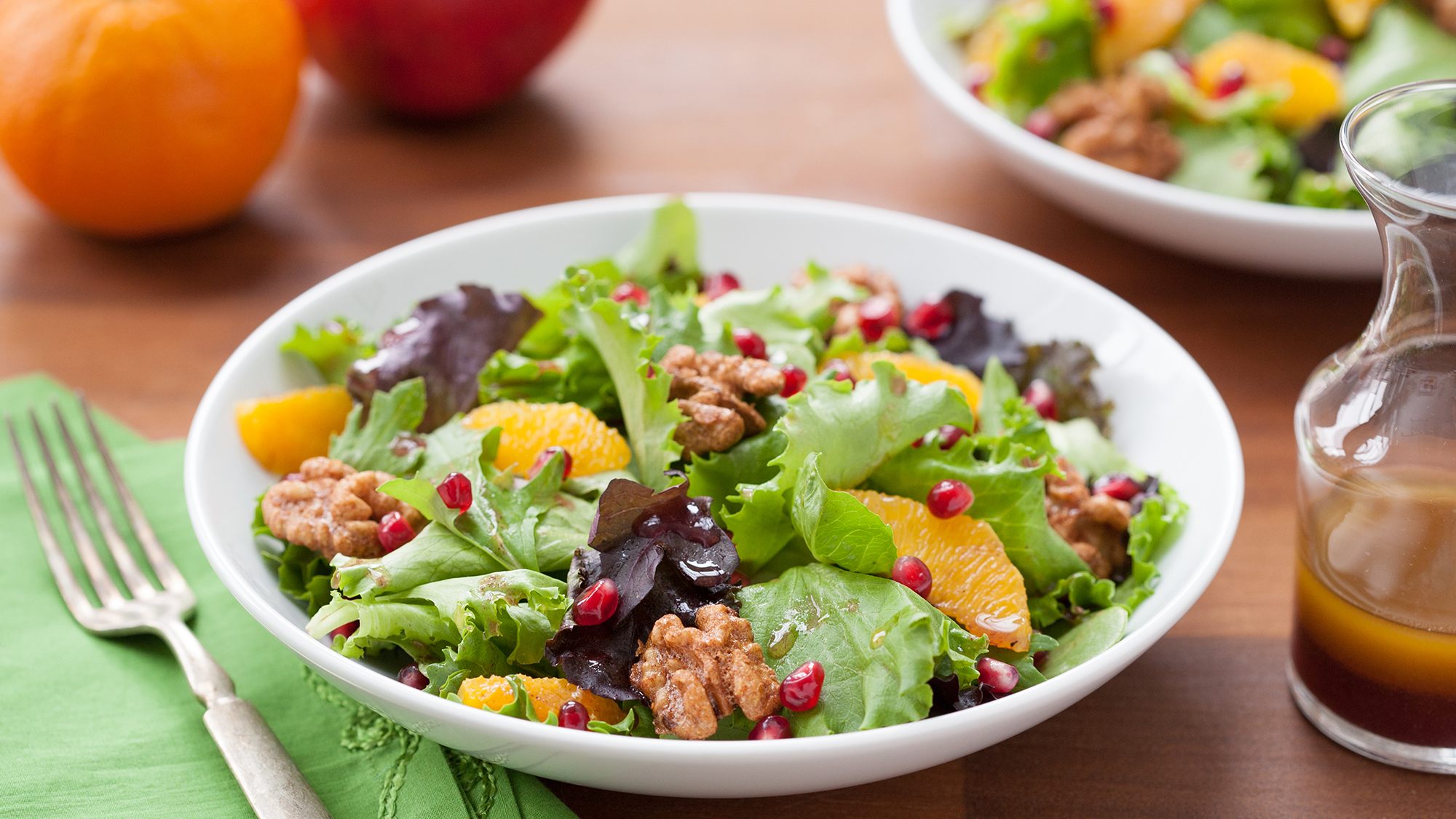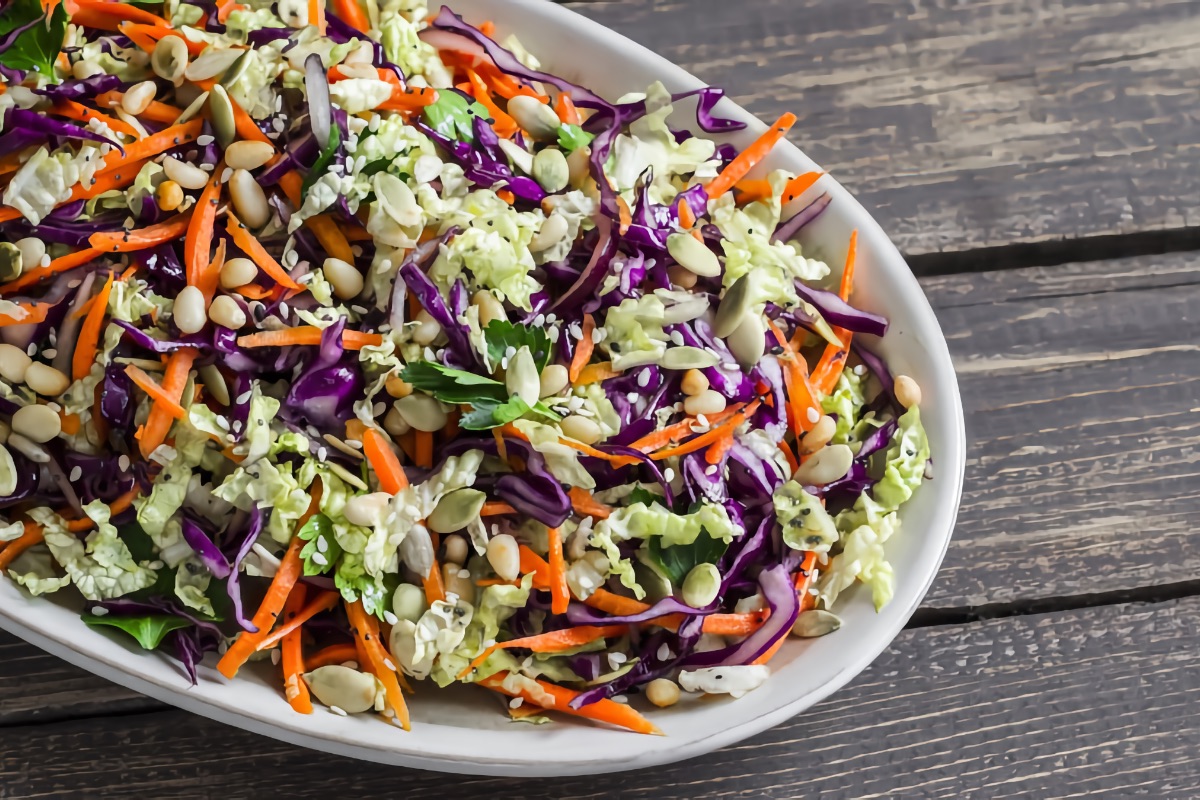Asian cuisine is the fasted growing ethnic cuisine, and it’s in no small part due to the exploding popularity of broth and noodle bowls in restaurants and at the market. And it can be a lot of fun to take part in this major food trend. Sometimes, though, it can seem challenging when we also try to prioritize our health, since we know that Asian take-out can be high in hidden calories, sodium and even sugar. And we also know that people who cook at home tend to consume fewer calories and less total salt, sugar and fat than those who eat out more frequently and cook less.*
So the question is: Can you do ‘Asian take-out’ at home? Yes, you can!
Learning to prepare a favorite like Asian take-out can be really fun.
Start with a favorite, high quality noodle and broth:
- Add veggies…fresh or frozen. Vegetables not only add nutrition, but also texture and volume to your meal. From baby bok choy, broccoli, beans, and carrots to corn, spinach, and kale. There’s room for mushrooms, bean sprouts and more in your bowl. And frozen vegetables work great too! Add frozen peas, broccoli, mixed vegetables, snow peas and more (which have been blanched so require less cooking time) into the pot on the stove about 3-5 minutes before the soup or noodles are done.
- Add fresh greens like spinach, kale, chard or other hearty greens to bump up the nutrition, color and satisfying crunch to your noodle bowl or soup. Sure, they’re vegetables, too, but they deserve a special place in your bowl!
- Add an egg. You can add hardboiled (halved or sliced), scrambled egg or fried egg to your noodle bowl, or drop a raw egg into the hot broth (on the stove) and let it cook in the soup alongside the noodles and other ingredients. Tip: an egg will take about the same time to cook as the noodles.
- OR add another type protein. In addition to or in place of an egg, add chicken, fish, shrimp or tofu. Adding your favorite protein to a noodle bowl or soup helps provide long-lasting energy from the whole meal. Try frozen shrimp for a lean, low calorie and quick protein. Slice and add baked or roasted chicken or a piece of cooked heartier fish. When sliced thin, lean raw beef, chicken or pork can even be added directly to the noodles and broth as they cook and will take just a few minutes. Use tofu—soft to firm, sliced and lightly stir-fried—and add it to your broth and noodles. Or try a store-bought variety of tofu that’s been marinated and ready-to-eat to add to the mix.
- Spice it up. Instead of the pre-made flavor packets with unfamiliar or artificial ingredients, lean on a few favorite herbs and spices and other flavorful condiments to bump up the flavor without the excess salt.
-
- A handy rule of thumb: Add about 1 teaspoon herbs and spices per 2 cups broth or 1 cup noodles. As you experiment, you can certainly add more as you wish to suit your personal taste.
- Some common tasty flavor pairings you can try:
- Ginger, garlic powder, crushed red pepper, honey, low sodium soy sauce
- Cinnamon sticks, ginger, whole cloves, crushed red pepper
- Thyme, oregano, garlic powder, black pepper
- Ginger, garlic powder, minced onions, hot chili sauce, fresh cilantro
- A handy rule of thumb: Add about 1 teaspoon herbs and spices per 2 cups broth or 1 cup noodles. As you experiment, you can certainly add more as you wish to suit your personal taste.
- Experiment with your own favorite herb and spice combinations or blends! In general: if they smell good together, they’ll probably taste good, too.
- Just a splash of vinegar or squeeze of lime or lemon can bring an unexpected brightness to your noodle bowl or soup.
- A small amount of low sodium soy sauce can add just enough ‘salty’ flavor without going overboard and that authentic noodle bowl taste.
- A spoonful of miso paste can make your noodle bowl or soup tastier, more authentic, and ultimately better for you than using those artificially-flavored, high sodium ‘flavor packets’ that come with many lower quality store-bought noodles.
- A teaspoon of sesame oil or hot sauce can add character to the aroma and flavor of the final dish.
And that’s all there is to it. Grab some chopsticks and a spoon, and savor your easy homemade noodle or soup bowl full of flavor and nutrition.
* Reference: Wolfson and Bleich, (2015), Is cooking at home associated with better diet quality or weight-loss intention? Public Health Nutrition, 18(8).
Looking for full recipes that are quick, easy and flavorful? Find them here.








